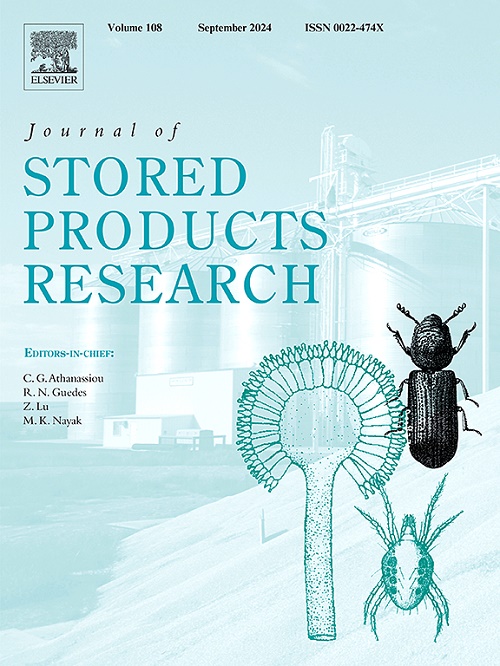A quality decay model with multinomial logistic regression and image-based deep learning to predict the firmness of ‘Conference’ pears in the downstream supply chains
IF 2.7
2区 农林科学
Q1 ENTOMOLOGY
引用次数: 0
Abstract
Traditional quality-decay models (e.g., multinomial logistic regression) for fruit quality classification deals with tabular data which focus mainly on the storage parameters such as storage duration and conditions (D&C). Those parameters have the effects on quality decay at an aggregate scale across different experimental levels; they are not good at capturing the variations within each experimental level. This may restrict the predictive power of the traditional model. On the contrary, image-based deep learning models are dealing with individual products and can extract the deep features of each fruit to provide individual-based quality information but lack information regarding the post-harvest conditions (time of harvest, storage conditions etc.).
In this research, we investigate the combined performance of the multinomial logistic regression with the image-based convolutional neural network (CNN) for quality prediction of ‘Conference’ pears (Pyrus communis L.) (measured by firmness) where the extracted deep features are used as the explanatory variables for the logistic regression model. The results show that combining deep features with D&C parameters are likely to improve the predictive power of the logistic regression model to predict the firmness of the conference pears. The managerial implications as well as future research directions are also discussed.
利用多项式逻辑回归和基于图像的深度学习建立质量衰变模型,预测下游供应链中 "会议 "梨的硬度
用于水果质量分类的传统质量衰变模型(如多项式逻辑回归)处理的是表格数据,主要侧重于贮藏参数,如贮藏时间和贮藏条件(D&C)。这些参数在不同的实验水平上对质量衰变的影响是总体性的,它们不能很好地捕捉每个实验水平内的变化。这可能会限制传统模型的预测能力。相反,基于图像的深度学习模型处理的是单个产品,可以提取每个水果的深度特征,提供基于个体的质量信息,但缺乏有关采后条件(采收时间、贮藏条件等)的信息。在这项研究中,我们研究了多项式逻辑回归与基于图像的卷积神经网络(CNN)在 "会议 "梨(Pyrus communis L.)质量预测(以硬度衡量)中的组合性能,其中提取的深度特征被用作逻辑回归模型的解释变量。结果表明,将深层特征与 D&C 参数相结合很可能会提高逻辑回归模型预测会议梨硬度的预测能力。此外,还讨论了其管理意义和未来的研究方向。
本文章由计算机程序翻译,如有差异,请以英文原文为准。
求助全文
约1分钟内获得全文
求助全文
来源期刊
CiteScore
5.70
自引率
18.50%
发文量
112
审稿时长
45 days
期刊介绍:
The Journal of Stored Products Research provides an international medium for the publication of both reviews and original results from laboratory and field studies on the preservation and safety of stored products, notably food stocks, covering storage-related problems from the producer through the supply chain to the consumer. Stored products are characterised by having relatively low moisture content and include raw and semi-processed foods, animal feedstuffs, and a range of other durable items, including materials such as clothing or museum artefacts.

 求助内容:
求助内容: 应助结果提醒方式:
应助结果提醒方式:


